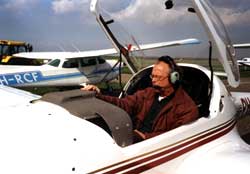 Aside from being two small constitutional monarchies that sit alphabetically next to each other at United Nations conferences, the Netherlands and Nepal appear to have little else in common. The Netherlands is a post-industrial country with wide-reaching infrastructure, virtually no remaining unmanipulated nature and startlingly high income tax. Nepal, for its part, is essentially non-industrial, with little infrastructure to speak of, nor enforced taxes for that matter, but abounding in natural beauty. Then there is the most apparent and amusing contrast-in the Netherlands the highest point is a few hundred feet above sea level, which in Nepal would be swiftly dismissed as a dhisko.
Aside from being two small constitutional monarchies that sit alphabetically next to each other at United Nations conferences, the Netherlands and Nepal appear to have little else in common. The Netherlands is a post-industrial country with wide-reaching infrastructure, virtually no remaining unmanipulated nature and startlingly high income tax. Nepal, for its part, is essentially non-industrial, with little infrastructure to speak of, nor enforced taxes for that matter, but abounding in natural beauty. Then there is the most apparent and amusing contrast-in the Netherlands the highest point is a few hundred feet above sea level, which in Nepal would be swiftly dismissed as a dhisko. But tourism is one concern both countries share. Nepal wants tourists and the Dutch are tourists. Whichever country in the world you care to visit, you are bound to find a Dutchie. Most are just travelling, but others settle down and turn to good old-fashioned Calvinist Dutch entrepreneurship. From beaches in Thailand to outposts in Alaska, there are Netherlanders running bars, restaurants and businesses. Nepal is no exception: the cosy oasis called the Summit Hotel was established by their own countrymen and specifically caters to their cultural and dietary needs.
In 1998, the number of Dutch nationals visiting Nepal saw a sharp increase. According to figures from the Consulate of the Kingdom of Nepal in Amsterdam, the total number of tourist visas issued were 6,649 in 1997, 10,860 in 1998 and 12,883 in 1999. In other words, there was a doubling of visitors in just two years, and these figures don't include the number of Dutch nationals who get their Nepali visa at the Chinese or Indian borders, or at the Tribhuvan Intenrational Airport. To what can we attribute this sharp increase? Probably not to the ingenious marketing strategies of the Visit Nepal 1998 initiative. The answer comes in the unlikely form of the Dutch airline, Transavia.
Transavia is a daughter company of KLM, the Dutch flag-carrier, and has its own fleet of 25 planes. Already a well-established charter airline in the Netherlands, the bulk of Transavia's traditional business was built around transporting Dutch holiday-makers to beach destinations like Ibiza and Mallorca in the summer holidays. So adding Kathmandu as a seasonal destination from September to April dovetailed nicely with the supply and demand of their staff and fleet, which are fully occupied in the summer months, but less so in the northern winter.
And how Transavia came to fly to Kathmandu is a story in its own right. The unexpected catalysts were the crown princes of both kingdoms, though they surely did not know things would turn out this way. In 1967, King Mahendra was on an official visit to the Netherlands. Unfortunately, the evening of the royal banquet did not go as planned. The palace was a little frazzled, and Queen Juliana was absent-she was giving birth to the future crown prince of the Netherlands, Willem-Alexander. Almost thirty years later, this incident helped Cas F de Stoppelaar, the Royal Nepalese Honorary Consul General to the Netherlands, get Transavia to fly to Nepal.
De Stoppelaar dashed off a letter to the Dutch Royal Palace, pointing out that the palace had once been responsible for ruining an official dinner in honour of King Mahendra. The palace rang him back, one thing led to another and in January 1997, Crown Prince Willem-Alexander of the Netherlands made an official visit to Nepal. Received, in line with expected protocol, by then Crown Prince Dipendra, Willem-Alexander extended an \'open invitation' at the end of his stay for his host to pay a return visit.
1998 was a year of growing Dutch interest in Nepal, particularly due to the press coverage surrounding the IMAX Everest film, and the news that Nepal's crown prince would be visiting. De Stoppelaar, together with the influential Dutch travel agency OAD (which owns Nepal Reizen), had been approaching airlines with the idea of opening up a direct route between Amsterdam and Kathmandu, something on the order of 150 seats a week. The search ran into administrative obstacles-there was no Air Service Agreement between the Netherlands and Nepal. Such an agreement is a prerequisite for direct flights to commence between any two nations. On 10 June 1998, when the late Crown Prince Dipendra was in the Netherlands, an agreement was signed between Transavia and RNAC, allowing them to fly to each other's capitals.
The first Transavia flight to Kathmandu took off on 23 September, 1998. In the cockpit-though not at the controls-was de Stoppelaar, himself a holder of a pilot's licence and a long-time aircraft enthusiast.
At present Transavia flies two 220-seater aircraft a week to Kathmandu for 35 weeks of the year, transporting up to 15,400 people to Nepal and back. The psychological importance of being able to fly directly from one's own country and, moreover, with a trusted \'home' airline cannot be underestimated. By filling this niche in the market, the Transavia service to Kathmandu has quite literally placed Nepal on the map of possibility for a class of older, wealthier, non-backpacking Dutch tourists who might previously have gone to Bali for a beach holiday. And it's not just the Dutch. The number of Belgian tourists coming to Nepal has jumped 15 percent this year compared to last year-the only nationality to register an increase.


